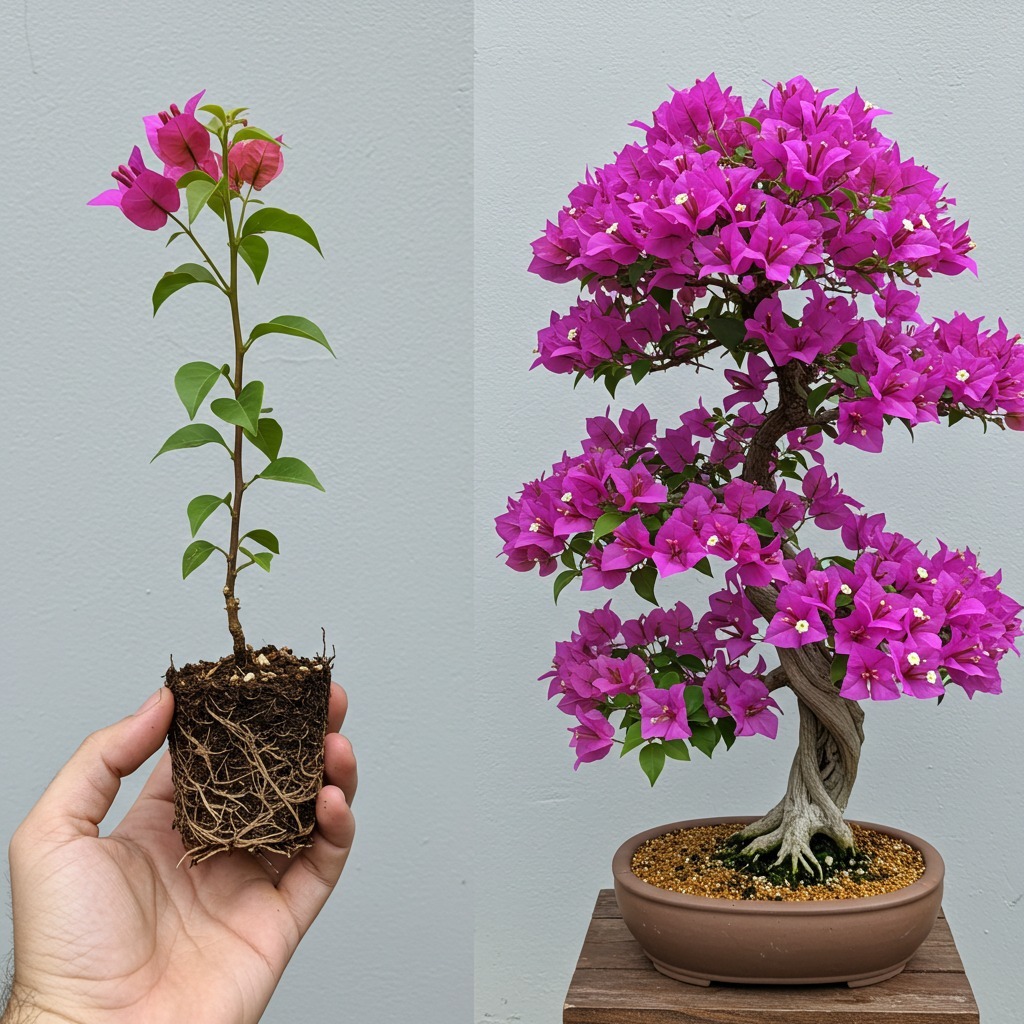Bougainvilleas, belonging to a genus of approximately 18 different plant types, are native to South America, and each one has the potential to offer a unique and marvelous spectacle through its blooming. These climbing shrubs can reach up to 12 meters in height and, depending on the climate, may blossom throughout the year, especially in climates like ours, where they flourish from spring to late autumn.
Contrary to popular belief, bougainvillea flowers are small and white, surrounded by bracts that come in various colors and have a papery texture.
Sunlight Requirements: Bougainvilleas require full sunlight to blossom adequately. Therefore, treat this species as an outdoor bonsai, and protect it from frost and wind. If the plant loses its leaves during colder months, don’t panic; it’s a natural part of its life cycle.
Bonsai Soil for Bougainvillea: Bougainvilleas have a delicate and fine root system, so it’s crucial to use a porous and acidic soil. You can opt for a mixture of akadama, adding 30% kiryzuna or kanuma.
Watering Your Bougainvillea Bonsai: Water when the surface of the soil begins to dry. Maintain the soil moisture without causing water stagnation. For optimal results, use osmosis water to prevent alterations in the soil pH due to dissolved salts.
Pruning and Pinching: As climbing shrubs, bougainvilleas tend to develop shoots at the tips to attach themselves to other trees. To shape the bonsai, pinch more intensely on the apices, distributing vigor to lower branches. Pinch after flowering. Prune to two buds to strengthen the plant and encourage new branches directly from the old trunk.
Wiring Your Bonsai: Exercise caution with wiring, as bougainvillea branches can break or dry out easily. Wire tender shoots to guide their growth in the desired direction.
Creating a bougainvillea bonsai is a rewarding endeavor, and by following these steps, you can cultivate a breathtaking miniature version of this vibrant and colorful plant.
